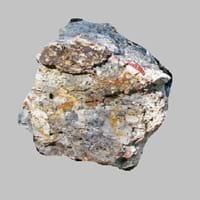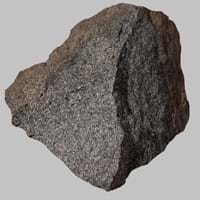Definition
Novaculite is a dense, hard, fine-grained, siliceous metamorpic rock which is a type of chert that breaks with conchoidal fracture
Gabbro is an intrusive igneous rock which is chemically equivalent to plutonic Basalt
Discoverer
Unknown
Christian Leopold von Buch
Etymology
From Latin word novacula, for razor stone
From Latin glaber bare, smooth, bald
Class
Sedimentary Rocks
Igneous Rocks
Sub-Class
Durable Rock, Hard Rock
Durable Rock, Hard Rock
Group
Not Applicable
Plutonic
Other Categories
Fine Grained Rock, Opaque Rock
Coarse Grained Rock, Opaque Rock
Texture
Banded, Glassy, Rough, Vitreous
Phaneritic
Color
Black, Brown, Green, Grey, Red, White
Dark Grey to Black
Durability
Durable
Durable
Scratch Resistant
Yes
Yes
Appearance
Glassy or Pearly
Veined and Shiny
Interior Uses
Countertops, Decorative Aggregates, Flooring, Interior Decoration
Countertops, Decorative Aggregates, Homes, Interior Decoration
Exterior Uses
As Building Stone, Garden Decoration
As Building Stone, As Facing Stone, Garden Decoration, Office Buildings, Paving Stone
Other Architectural Uses
Curbing
Curbing
Construction Industry
Arrowheads, Building houses or walls, Cement Manufacture, Construction Aggregate, Cutting Tool, for Road Aggregate, Knives, Landscaping, Making natural cement, Production of Glass and Ceramics, Rail Track Ballast, Roadstone, Spear Points, Used to sharpen metal tools and weapons
As Dimension Stone, Building houses or walls, Cement Manufacture, Construction Aggregate, for Road Aggregate
Medical Industry
Not Yet Used
Not Yet Used
Antiquity Uses
Artifacts, Monuments
Artifacts, Monuments, Sculpture
Commercial Uses
Cemetery Markers, Gemstone, In aquifers, In fire-starting tools, Jewelry, Manufacture of tools, Pebbles are used in ball mills to grind in ceramics industry, To determine the gold content of jewelry
Cemetery Markers, Commemorative Tablets, Laboratory bench tops, Jewelry, Sea Defence, Tombstones
Types
Not Available
Not Available
Features
Clasts are smooth to touch, Easily splits into thin plates, Has High structural resistance against erosion and climate
Smooth to touch
Archaeological Significance
Famous Monuments
Data Not Available
Data Not Available
Sculpture
Not Yet Used
Used
Famous Sculptures
Not Applicable
Data Not Available
Pictographs
Not Used
Not Used
Petroglyphs
Not Used
Not Used
Figurines
Not Yet Used
Used
Formation
Novaculite forms when microcrystals of silicon dioxide grow within soft sediments that become limestone or chalk. The formation of Novaculite can be either of chemical or biological origin.
Gabbro, a mafic rock, forms due to cooling and crystallization of magma underneath Earth's surface.
Mineral Content
Quartz, Silicon
Augite, Olivine, Plagioclase, Pyroxene
Compound Content
Ca, Silicon Dioxide
Aluminium Oxide, CaO, Chromium(III) Oxide, Iron(III) Oxide, Potassium Oxide, MgO, Sodium Oxide, Silicon Dioxide, Sulfur Trioxide
Types of Metamorphism
Not Applicable
Impact Metamorphism
Types of Weathering
Not Applicable
Chemical Weathering
Types of Erosion
Chemical Erosion, Coastal Erosion, Glacier Erosion
Coastal Erosion
Grain Size
Fine Grained
Coarse Grained
Fracture
Conchoidal
Conchoidal
Porosity
Less Porous
Highly Porous
Luster
Waxy and Dull
Not Available
Cleavage
Non-Existent
Not Available
Specific Gravity
2.5-2.7
2.86-2.87
Transparency
Translucent to Opaque
Opaque
Density
2.7 g/cm3
2.7-3.3 g/cm3
Specific Heat Capacity
Not Available
Resistance
Heat Resistant, Impact Resistant, Pressure Resistant, Wear Resistant
Impact Resistant, Pressure Resistant, Wear Resistant
Deposits in Eastern Continents
Asia
China, India, Iran, Japan, Oman, Russia, Saudi Arabia, Taiwan, Thailand, Vietnam
India, Russia
Africa
Kenya, Morocco, South Africa, Tanzania
South Africa
Europe
Austria, France, Greece, Italy, Malta, Poland, Portugal, Serbia, Spain, Sweden, United Kingdom
Germany, Greece, Italy, Scotland, Turkey
Others
Greenland, Mid-Atlantic Ridge
Greenland
Deposits in Western Continents
North America
Canada, Mexico, USA
Canada, USA
South America
Bolivia, Brazil
Brazil, Colombia, Venezuela
Deposits in Oceania Continent
Australia
New South Wales, Queensland, South Australia, Western Australia
New Zealand, Queensland
All about Novaculite and Gabbro Properties
Know all about Novaculite and Gabbro properties here. All properties of rocks are important as they define the type of rock and its application. Novaculite belongs to Sedimentary Rocks while Gabbro belongs to Igneous Rocks.Texture of Novaculite is Banded, Glassy, Rough, Vitreous whereas that of Gabbro is Phaneritic. Novaculite appears Glassy or Pearly and Gabbro appears Veined and Shiny. The luster of Novaculite is waxy and dull while that of Gabbro is not available. Novaculite is available in black, brown, green, grey, red, white colors whereas Gabbro is available in dark grey to black colors. The commercial uses of Novaculite are cemetery markers, gemstone, in aquifers, in fire-starting tools, jewelry, manufacture of tools, pebbles are used in ball mills to grind in ceramics industry, to determine the gold content of jewelry and that of Gabbro are cemetery markers, commemorative tablets, laboratory bench tops, jewelry, sea defence, tombstones.









